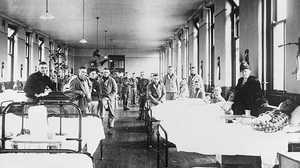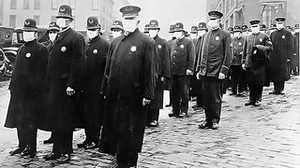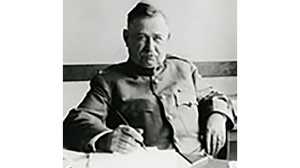Placing Blame

When influenza began to cut its deadly path across the U.S. in the autumn of 1918, it did so with such speed and fatal efficiency that some believed sinister forces to be at work. By the early 1900s, many Americans had lulled themselves into thinking that the wonders of medical science could vanquish any foe, no matter how microscopic. For over a century, after all, the booming science of medicine had gone from one triumph to the next. Researchers had developed vaccines for diseases ranging from anthrax to smallpox. Great advances in microbiology had eliminated the mystery from once fatal diseases. When it turned out that influenza was confounding even the most brilliant medical minds of the time, fear set in, and along with it, suspicion.
That America was engaged in a World War provided a convenient target upon which to heap suspicion: the reviled Kaiser and his German countrymen. As thousands of Bostonians fell under the flu’s deadly spell, rumors began to spread almost as fast as the flu itself. One widely accepted notion — outside of the medical profession, that is — had German spies deliberately seeding Boston Harbor with influenza-sprouting germs. Such innuendo was lent credence by statements of individuals who should have known better. On September 17, 1918, Lt. Col. Philip Doane, head of the Health and Sanitation Section of the Emergency Fleet Corporation, forcefully voiced his opinion that the epidemic might have been started by Germans put ashore from U-Boats. Said Doane, “It would be quite easy for one of these German agents to turn loose influenza germs in a theater or some other place where large numbers of persons are assembled. The Germans have started epidemics in Europe, and there is no reason why they should be particularly gentle with America.”
Other notions of this strain of influenza’s origin contained less-politically charged, but equally specious logic. According to one theory, poison gases used in the war, air charged with carbon dioxide from the trenches, and gases formed from decomposing bodies and exploding munitions had all fused to form a highly toxic vapor that flu victims had inhaled. Among the other causes advanced were air stagnation, coal dust, fleas, the distemper of cats and dogs, and dirty dishwater.







